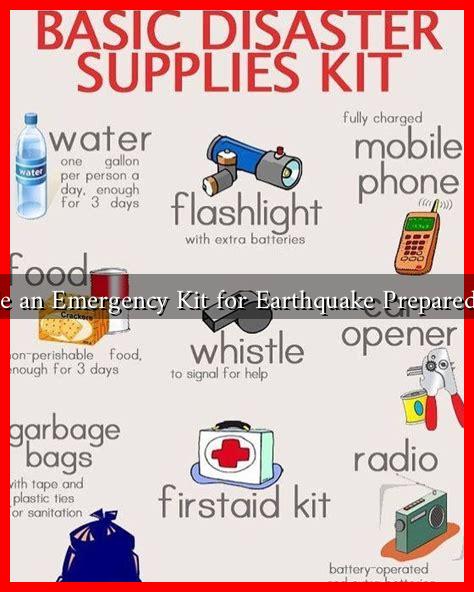-
Table of Contents
How to Assemble an Emergency Kit for Earthquake Preparedness in Lebanon
Lebanon is situated in a seismically active region, making it susceptible to earthquakes. The 2006 earthquake in the region serves as a stark reminder of the potential devastation that can occur. As such, preparing an emergency kit is crucial for ensuring safety and survival during such natural disasters. This article will guide you through the essential components of an earthquake preparedness kit tailored for Lebanon.
Understanding the Risks
Lebanon’s geographical location places it near the boundary of the Arabian and Eurasian tectonic plates, leading to a history of seismic activity. According to the Lebanese National Center for Geophysics, the country experiences numerous minor tremors annually, with significant earthquakes occurring every few decades.
. The most notable was the 551 AD earthquake, which devastated the city of Beirut.
Essential Components of an Emergency Kit
When assembling an emergency kit, it is vital to include items that will sustain you and your family for at least 72 hours following an earthquake. Here are the essential components:
- Water: Store at least one gallon of water per person per day for three days. Consider using water purification tablets or filters.
- Non-perishable Food: Include items like canned goods, energy bars, and dried fruits. Ensure you have a manual can opener.
- First Aid Kit: A well-stocked first aid kit should include bandages, antiseptics, pain relievers, and any necessary prescription medications.
- Flashlight and Batteries: A reliable flashlight is essential for navigating in the dark. Keep extra batteries on hand.
- Multi-tool or Swiss Army Knife: This can be invaluable for various tasks, from opening cans to making repairs.
- Whistle: A whistle can help signal for help if you are trapped.
- Dust Masks: These can help filter contaminated air and protect against dust and debris.
- Emergency Blanket: Compact and lightweight, these blankets can provide warmth in case of exposure.
- Local Maps: In case of power outages, having a physical map can help you navigate to safety.
- Personal Documents: Keep copies of important documents (IDs, insurance policies) in a waterproof bag.
Additional Considerations
While the above items are essential, consider the specific needs of your family. For instance:
- Infants: Include baby formula, diapers, and other necessities.
- Pets: Don’t forget food, water, and supplies for your pets.
- Special Needs: If someone in your household has special medical needs, ensure you have the necessary supplies.
Storing Your Emergency Kit
Once you have assembled your emergency kit, proper storage is crucial. Here are some tips:
- Location: Store your kit in a cool, dry place that is easily accessible.
- Regular Checks: Review and update your kit every six months to replace expired items.
- Family Involvement: Involve your family in the process to ensure everyone knows where the kit is stored and its contents.
Educating Yourself and Your Family
In addition to having an emergency kit, it is essential to educate yourself and your family about earthquake preparedness. Participate in local drills, learn how to “Drop, Cover, and Hold On,” and familiarize yourself with safe spots in your home. Resources such as the Ready.gov Earthquake Preparedness website provide valuable information.
Conclusion
Assembling an emergency kit for earthquake preparedness in Lebanon is a proactive step towards ensuring the safety and well-being of you and your loved ones. By understanding the risks, gathering essential supplies, and educating your family, you can significantly enhance your preparedness for potential earthquakes. Remember, the time to prepare is now—don’t wait for the next tremor to take action.




